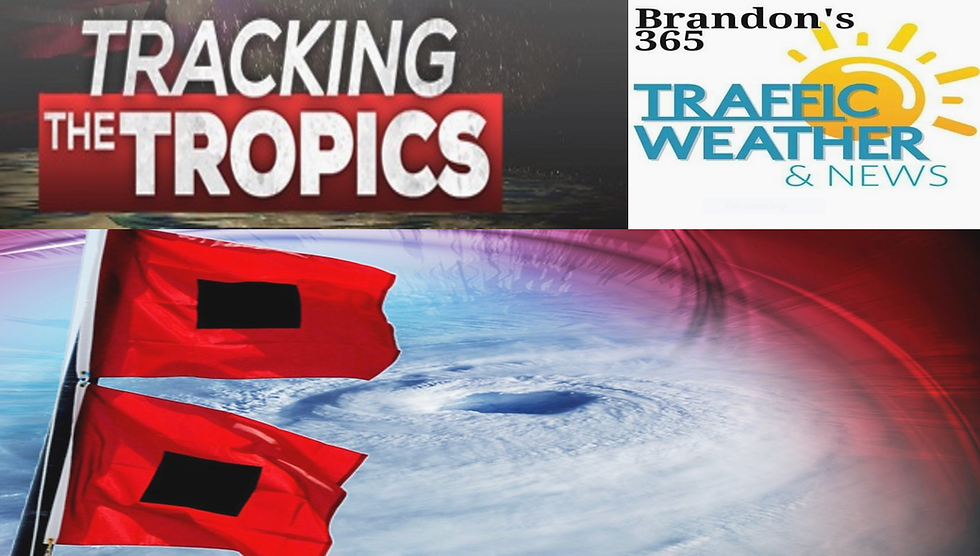June-September Fire Weather Outlook
- Brandon Shipp

- Jun 8, 2020
- 3 min read
June through early July is the peak of the fire season across the Southwest. Expect for the normal fire activity across the region to increase through the period with some areas experiencing Above Normal significant large fire potential, especially across Arizona. As the monsoon begins in mid-July, activity across the Southwest will diminish. Activity across Alaska will also diminish as the rainy season begins. California, central and northern portions of the Great Basin, the Pacific Northwest, and the Northern Rockies will begin to enter their peaks. Above Normal significant large fire potential is expected in the areas shown on the maps to the left due primarily to increasing drought conditions, early loss of mountain snowpack, anticipated lightning activity, and overall hot and dry conditions that should persist through August. As is typically the case, the peak season fire activity across the northwestern portion of the country should diminish by mid September as the seasonal transition begins and allows for wet fronts to begin to bring precipitation to impacted areas. Northern Rockies: Normal significant large fire potential is expected across the region during June followed by Above Normal fire potential for western Montana and northern Idaho for July, August, and September. Eastern Montana and the Dakotas can expect Normal significant large fire potential during the outlook period. Significantly moister than average conditions returned to northern Idaho and Montana, west of the Continental Divide after several months of drier conditions. north central Montana and a portion of northeastern Montana were also wetter than average during the past month. southwestern, south central, and far eastern Montana, as well as most of western North Dakota were drier than average. eastern North Dakota recorded near average precipitation. Temperatures during the preceding month were generally near average across the region. The near average temperatures combined with generous precipitation meant western area mountain snowpacks were melting slowly, until just during the past ten days. Warmer temperatures then combined with two moist upper trough passages that had high snow levels with abundant precipitation that produced greater rates of snowmelt, and rainfall runoff. This has produced minor flooding on smaller waterways and rivers in portions of northern Idaho and western/central Montana. Mountain snowpacks have completely melted off in the lowest elevations of the western areas, and largely so in the middle elevations. But significant amounts are still present over the higher elevations, generally above 6000 feet north, to 8000 feet south. Latest NWS Climate Prediction Center calculated soil moisture anomalies are now near or above-average over all the region, with the driest, near average values in northern Idaho, southwestern Montana, and northwestern North Dakota. Rocky Mountain: Above Normal significant large fire potential is expected across southwestern Colorado in June and southwestern through northwestern Colorado in July. Elsewhere, Normal significant large fire potential is expected during the outlook period. After a cooler than average period during late March and April across the region, warmer than average conditions emerged in May across central and southern Colorado. April and May precipitation deficits were significant across locations west of the Continental Divide, especially across southwestern through southeastern Colorado. Long range deficits were most evident west of the Divide especially across southwestern Colorado into southeast Colorado. The Drought Mitigation Center portrays “Extreme” drought across portions of southern Colorado. Antecedent dead fine fuel loading resulting from the robust growing season of 2019 are evident across southern Colorado and spring green up has been stunted this year. Soil moisture west of the Divide into southeastern Colorado is below the 20th percentile. ERC values are greatest as of across southwestern Colorado above the 90th percentile using the May through October historical dataset. Furthermore, a few stations have occasionally spiked above daily maximums. For the first week of June forecast models indicate a wetter pattern overall compared to what was experienced during much of the month of May. CPC long range forecasts show a wetter than average regime across the eastern plains in June, with average to drier than average conditions across Wyoming and central to western Colorado for the July through August period. Moderating fire potential is forecasted across Colorado during the early portion of June associated with a surge of tropical moisture with beneficial rainfall from scattered wet thunderstorm activity. However, resulting from a delayed and less vigorous green-up across southern Colorado in combination an intensification of the long term drought, the large fire potential is forecast rebound to be back in the Above Normal range across southern Colorado by mid-June. Average precipitation is expected to occur during the second half of June across the geographic area. CPC long range outlooks indicate a drier than average regime across Wyoming and central to western Colorado during the July through August period. Given the drier than average long range forecasts in conjunction with an expansion of drought this spring across western and southern Colorado, the above average risk is predicted thern Colorado, then moderating the fire potential across northwestern Colorado by August.











Comments